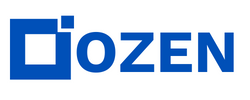Chromatography Separation with Ansys Fluent
This tutorial provides guidelines and recommendations for modeling fluid flow and species inside a biopharmaceutical chromatography column. We start with a mesh geometry featuring four inlets on the top and four outlets on the bottom.
Simulation Setup
- Go to General and set up the problem as transient. This is a transient simulation.
- Enable gravitational forces in the minus y-direction, set to -9.81.
- Use the default solver settings: pressure-based and absolute velocity formulation.
Physics Setup
- Select the appropriate physics model: Viscous with the standard two-equation K-Omega model. Use default values.
- Enable Species Transport and ensure diffusion and energy sources are activated.
Materials Setup
- Under Fluids, define materials:
- Water Liquid
- Tracer (renamed water liquid)
- Define the mixture properties, including heat capacity and molecular weight, using default values.
- For the mixture:
- Density: Incompressible gas law
- Heat Capacity: Based on mixing law
- Thermal Conductivity: Constant at 0.0454
- Viscosity: 1.72
- Define the porous zone:
- Check off Porous Media for the column definition.
- Define viscous resistance equivalent to permeability.
Boundary Conditions
- For each of the four inlets:
- Momentum: Velocity of 0.25 m/s
- Thermal: Default at 300 Kelvin
- Species: Input from a file
- For each of the four outlets:
- Momentum: Atmospheric pressure (0)
- Thermal: Default settings
- Species: Tracer is 0 (no backflow)
Solution Methods
- Set pressure to PRESTO!
- Set momentum, turbulence, tracer, and energy to second-order upwind.
- Enable advanced options:
- Port face gradient correction
- High order term relaxation
- Set relaxation for flow variables to 0.75.
Initialization and Run Setup
- Use Hybrid Initialization and click Initialize.
- Define run calculations:
- Time step: 0.05
- Total steps: 100
- Iterations per time step: 20
Output and Monitoring
- Set up a report to monitor the mass-weighted average at the outlets.
- Select the right variable: Species and Mass Fraction of Tracer.
Conclusion
After running the simulation, you can observe the tracer concentration over time. The tracer enters the column, disperses through the porous material, and eventually exits. You can analyze the mass-weighted average of the tracer as a function of time.
We hope you found this tutorial useful. Looking forward to the next tutorial. Thank you. Bye.
This tutorial provides guidelines and recommendations for modeling fluid flow and species in a biopharmaceutical chromatography column using Ansys Fluent. It starts with a mesh geometry, including four inlets at the top and four outlets at the bottom.
To set up the problem, follow these steps: 1. Go to General and set the problem as transient. 2. Turn on gravitational forces in the -y direction (minus 9.81). 3. Use the default solver (pressure-based) and absolute velocity formulation.
To solve the problem and set up the physics: 1. Pick viscous as the scale (standard two equation K-omega). 2. Turn on species transport, including diffusion and energy source. 3. Define the mixture later.
To set up the materials: 1. Under Fluids, select water liquid and tracer (renamed water liquid). 2. Define the tracer as a basic species. 3. Define the fluids inside each zone, except for the porous zone.
To define the porous media: 1. Check off porous media for the porous zone. 2. Define the viscous resistance (equivalent to permeability of the material).
To define the boundary conditions: 1. Set the velocity for the four identical inlets (0.25 meters per second). 2. Set thermal conditions for the inlets (300 Kelvin). 3. Define the tracer species for the inlets (from a file). 4. Set the outlets with atmospheric pressure (0) and thermal defaults. 5. Set the tracer for the outlets (0).
To set up the solution methods: 1. Use Presto for pressure and second order up for momentum, turbulence, species, and energy. 2. Enable port face gradient correction and high order term relaxation. To initialize the simulation: 1. Use hybrid initialization.
To set up the run: 1. Define the total number of steps (100), iterations per time step (20), and time step (0.05). To define the output: 1. Monitor the mass weighted average of the tracer at the outlets.
The tutorial provides a series of concentration plots at different planes, showing the tracer entering, dispersing, expanding, and leaving the column.


![Ansys-elite-channel-partner-horizontal-reversed[1]](https://www.ozeninc.com/uploads/2022/06/Ansys-elite-channel-partner-horizontal-reversed1.png)